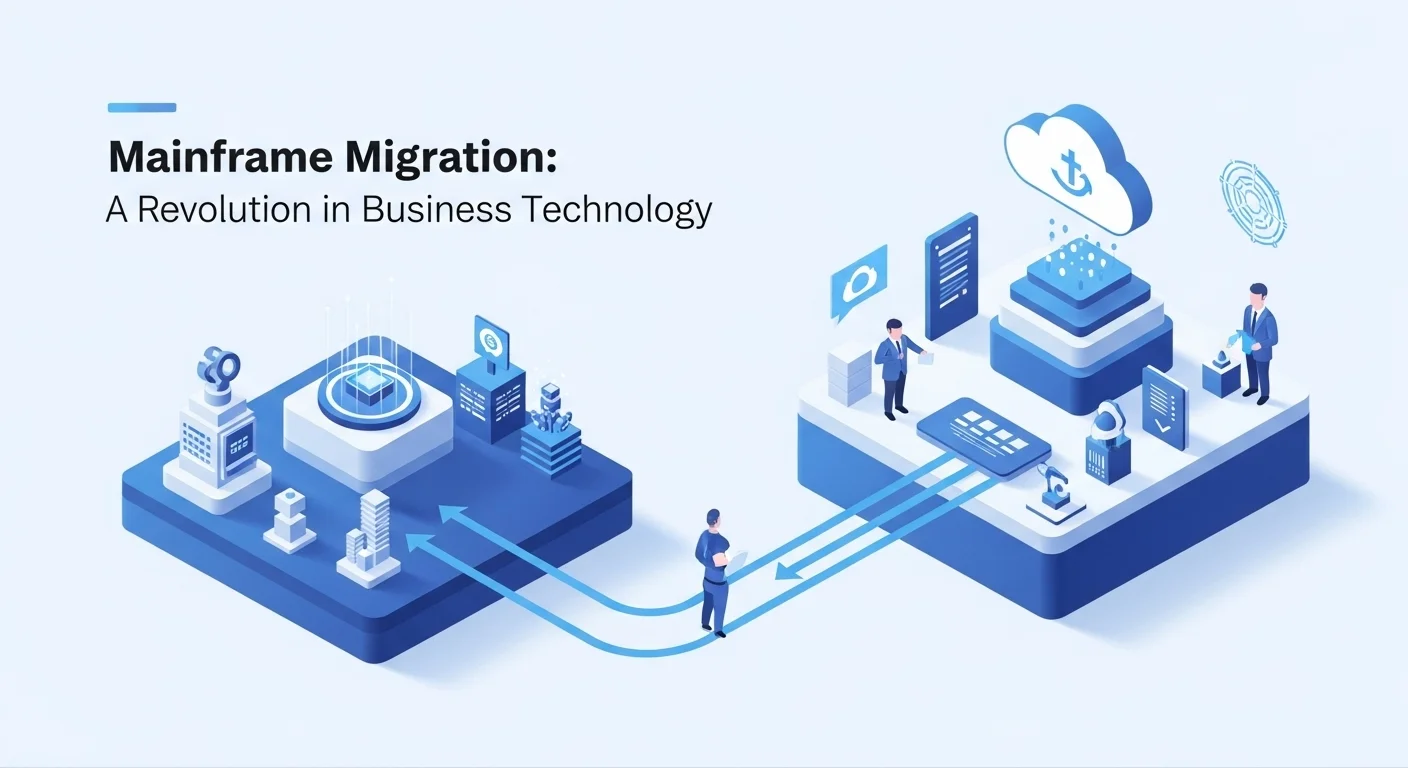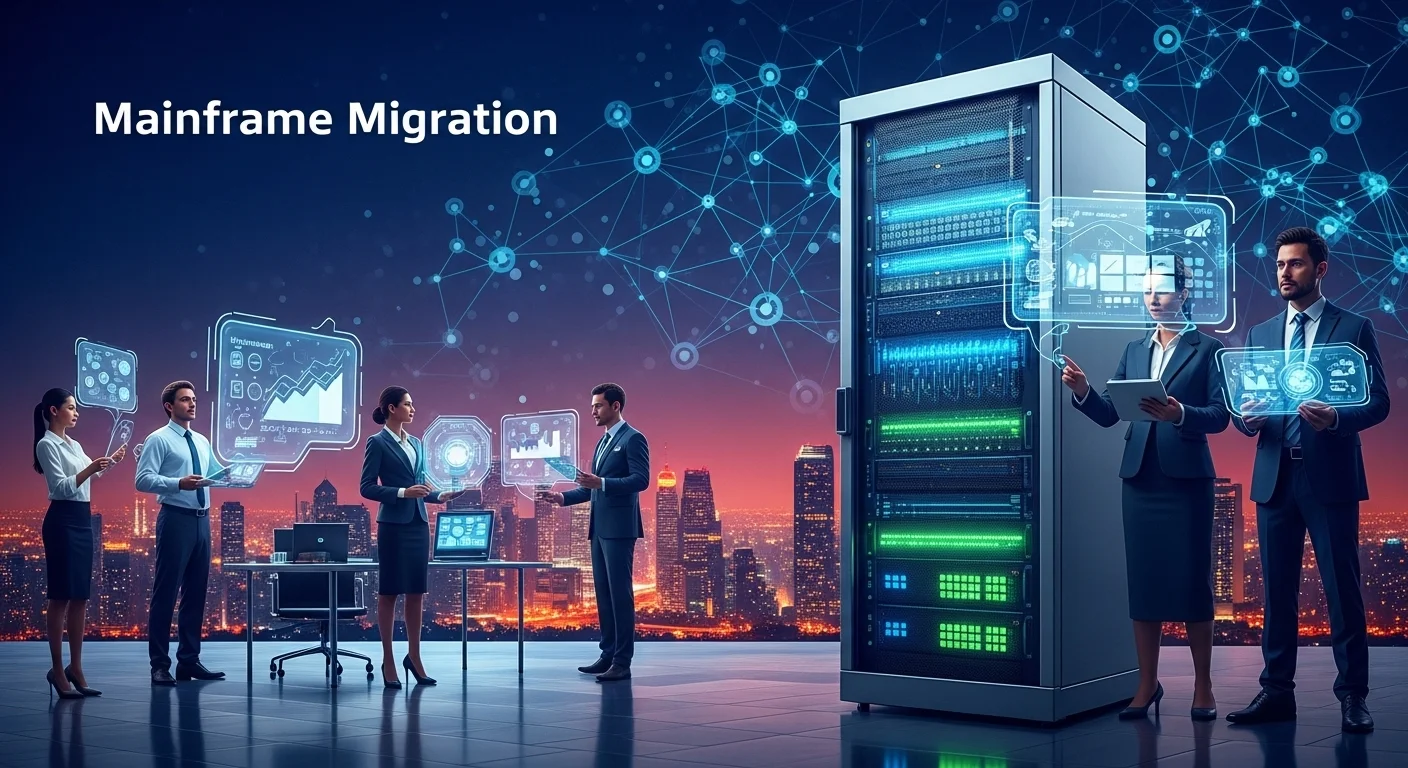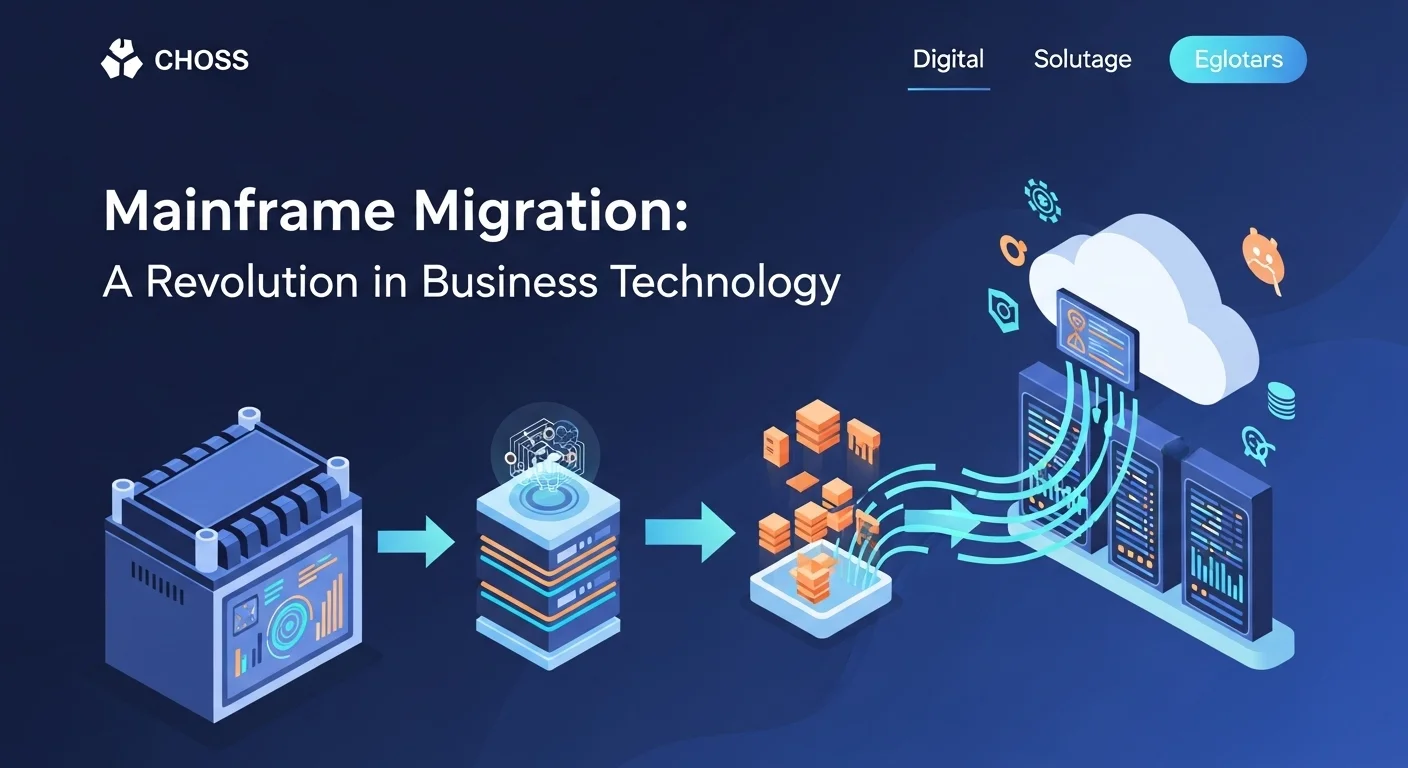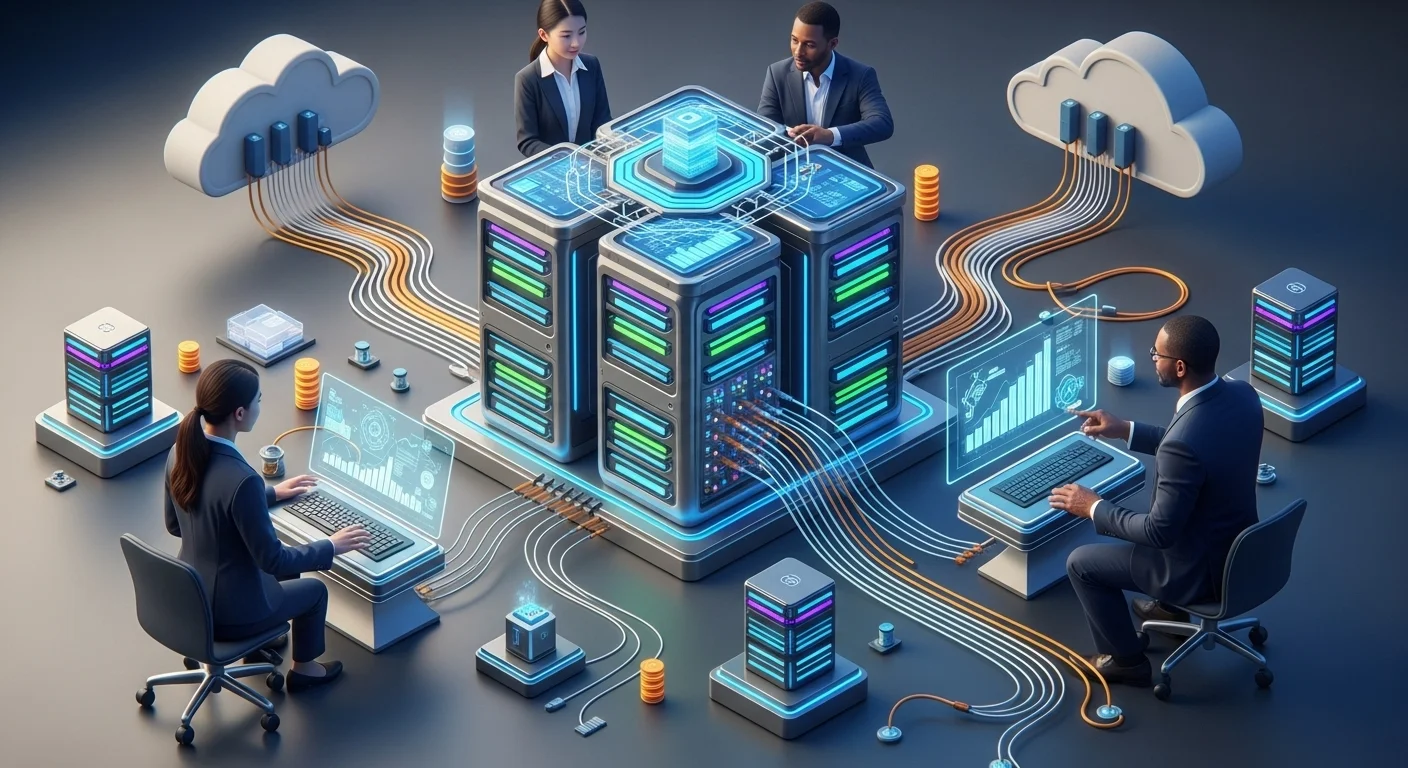From Legacy to Leading-Edge: Your Human Guide to Mainframe Migration

Executive Summary
Let's talk about mainframe migration. For years, I’ve seen companies rely on these incredibly powerful, stable mainframe systems—the unsung heroes of finance and insurance. But I've also seen the writing on the wall: the rising costs, the struggle to find skilled COBOL programmers, and the need to move faster than these legacy systems allow. Moving off the mainframe isn't just an IT project; it's a huge step forward for the entire business. In this article, I'm going to break down what it really means to move your core applications and data to the cloud. We'll look at the tangible benefits, like becoming more agile and unlocking the power of your data with modern analytics. I'll share my experiences with migrating to both AWS and Azure, highlighting the different paths you can take. This isn't about a simple tech upgrade. It's about transforming your company to thrive in a digital-first world.
Table of Contents
Table of Contents
What is Mainframe Migration and why is it important in Technology?
For decades, mainframes have been the silent workhorses of global business. I’ve worked with industries from banking to insurance that have built their empires on the reliability of these systems. They handle millions of transactions, from credit card swipes to flight bookings, without breaking a sweat. But the tech world moves fast, and the very things that made mainframes great—their stability and bespoke nature—are now being challenged by the flexibility and cost-efficiency of the cloud. This brings us to a huge trend in enterprise IT: Mainframe Migration.
In simple terms, mainframe migration is the process of moving your company's applications, data, and workloads from an old mainframe to a modern platform, usually the cloud. This isn't a simple drag-and-drop. I've been in the trenches on these projects, and they are complex, strategic initiatives that require careful planning and a clear vision of what you want to achieve. The process can be as simple as rehosting an application on a cloud server or as complex as completely rebuilding it to be cloud-native.
The importance of this shift is massive. Businesses today need to innovate at lightning speed and use data to stay ahead. Old mainframe environments can sometimes be a roadblock. They often use programming languages like COBOL that fewer developers know, making it hard to integrate with modern apps or adopt practices like DevOps. Plus, the cost of keeping the lights on for mainframe hardware and software can be staggering. In my experience, a successful move to the cloud isn't just about saving money, though the TCO reduction can be anywhere from 60-90%. It's about unlocking agility. It’s about being able to scale up for a big sales event and then scale back down, only paying for what you use. It's about breaking your data out of its silo so your analytics and AI teams can finally put it to work.
The Real Reasons Companies are Leaving the Mainframe
The journey from a trusty mainframe to a modern cloud platform is a game-changer. I’ve seen it transform businesses firsthand. The push to migrate usually comes down to three core pressures.
First, the cost is a killer. Mainframes demand huge upfront investments in hardware, plus steep annual fees for software and maintenance. The cloud’s pay-as-you-go model is a breath of fresh air for CFOs, turning heavy capital expenses into predictable operational ones.
Second, the skills gap is a real crisis. The generation of brilliant COBOL programmers who built these systems is retiring, and finding new talent to manage them is incredibly tough. Migrating to the cloud means you can use modern languages like Java and Python, making it far easier to hire and retain the engineering talent you need to innovate.
Third, the need for speed. In today's market, you can't afford to wait six months to launch a new feature. Mainframe development cycles are often slow and rigid. Moving to a platform like AWS or Azure allows you to embrace Agile and DevOps, shipping updates in weeks or even days. This ability to react quickly is what digital transformation is all about. A financial services company I worked with migrated its core banking system to the cloud. They went from launching one new product a year to launching new digital features every month, completely changing their competitive position. This is the true power of migration: it’s not about escaping the past, but about building an agile, data-driven future.

Complete guide to Mainframe Migration in Technology and Business Solutions
Taking on a mainframe migration is a massive undertaking, but with a clear roadmap, it’s one of the most valuable things you can do for your business. Success hinges on a strategy that blends technical know-how with smart business planning. Here’s a guide to navigating the journey, based on my years of experience in this space.
It all starts with choosing the right technical strategy. The industry standard is a framework often called the '7 Rs,' which outlines the different paths you can take. I’ve used this to guide countless clients.
- Rehost (Lift and Shift): This is the quickest route. You essentially move your mainframe application to a cloud server with very few changes, often using an emulator. The upside is speed and low risk. The downside? You’re moving your old problems and technical debt to a new house.
- Replatform (Lift and Reshape): A step up from rehosting. Here, you make a few tweaks to take advantage of the cloud, like moving your mainframe database to a managed cloud service like Amazon RDS or Azure SQL. It offers more benefits without a complete overhaul.
- Refactor/Rearchitect: This is where true modernization begins. It involves significantly changing the code to fit a cloud-native model, like breaking a giant monolithic application into smaller microservices. It's a bigger investment, but the long-term gains in agility and scalability are huge. Tools like AWS Blu Age can even automate the refactoring of COBOL into modern Java.
- Rebuild: Sometimes, it’s just better to start from scratch. If an application is too old and convoluted, you can rebuild it as a brand-new, cloud-native app. It's the highest effort but gives you a solution perfectly tailored to your future needs.
- Repurchase (Replace): Why build it if you can buy it? This means swapping your custom mainframe system for a commercial SaaS solution, like moving your old HR system to Workday. It can be fast, but you need to make sure the new software truly fits your business.
- Retain: You don’t have to move everything. If an application works well, is too risky to touch, or is being phased out soon, it might be best to leave it on the mainframe for now.
- Retire: During your initial review, you’ll almost certainly find applications that nobody uses anymore. The easiest win is to simply turn them off and decommission them. You'd be surprised how much this can simplify your project.
Choosing Your Cloud Platform: AWS vs. Azure
Choosing your cloud provider is a major decision. Both AWS and Azure are fantastic options, but they have different strengths.
A migration to AWS is a popular choice due to its mature services and extensive partner network. Their dedicated AWS Mainframe Modernization service is like a complete toolkit for the job, helping you analyze, migrate, and run your workloads. They also have programs that offer financial incentives and expert guidance, which can significantly de-risk a project.
A migration to Azure is often a natural fit for organizations already invested in the Microsoft ecosystem. Azure excels at hybrid solutions, making it easier to execute a staged migration where some apps move to the cloud while others stay on the mainframe, communicating seamlessly. They work with top partners like Micro Focus and Skytap to provide robust migration solutions.
Ultimately, a successful migration hinges on a solid plan. It starts with a deep discovery phase to map out everything on your mainframe. You need to get everyone on board, from the IT team to the business leaders. I always recommend starting with a small-scale pilot project. Prove the concept, build confidence, and then tackle the migration in manageable waves. This steady, phased approach is the key to turning a complex challenge into a transformative business victory.

Tips and strategies for Mainframe Migration to improve your Technology experience
Having a good plan is one thing; executing it successfully is another. Over the years, I've collected some hard-won lessons and strategies that can make all the difference in a mainframe migration project. Here are my top tips for making your technology experience a smooth one.
Lessons from the Trenches: My Best Practices
- Do Your Homework (Seriously): I can't stress this enough. The number one reason projects get derailed is an incomplete understanding of the legacy system. Before you write a single line of code, you must create a detailed map of every program, data file, and hidden dependency. Use automated discovery tools to help. This initial analysis is the foundation of your entire project.
- Migrate in Waves, Not a Tsunami: A 'big bang' migration, where you try to move everything at once, is a recipe for disaster. I always advise my clients to group applications into logical waves. Start with something low-risk to score an early win. This builds momentum and allows your team to learn and refine its process before tackling the really complex systems.
- Treat Data Migration as Its Own Project: Moving the data is often the hardest part. You need a dedicated strategy for extracting data from old formats like VSAM, transforming it, and loading it into the new cloud database. The most critical piece? Validation. You must have a bulletproof process to check that every single record made it across perfectly.
- Automate Your Testing: You need a rigorous, automated testing process to cover everything: functionality, performance under load, and security. Integrating automated testing into a CI/CD pipeline is non-negotiable for keeping the project moving while ensuring quality.
The Right Tools and a Human-Centered Approach
To put these strategies into action, you need the right tools. For project management, platforms like Jira or Azure DevOps are essential for keeping everyone aligned. The cloud providers themselves offer powerful assets. The AWS Mainframe Modernization service is a fantastic integrated platform, and Azure Migrate provides a central hub for managing your entire migration.
But the most important lesson I’ve learned is that migration is a people project more than a tech project. You have to manage the change. A financial services firm I worked with had a brilliant idea: they created a 'Cloud Center of Excellence' (CCoE). This expert team created best practices and supported the application teams, ensuring consistency. They also focused on upskilling their mainframe developers, honoring their deep business knowledge while teaching them new cloud skills. This focus on people and collaboration was their secret weapon.
Finally, remember that migration isn't the finish line. It's the starting line. Once you're on the cloud, the real fun begins. You can start to continuously improve your applications, break them into microservices, and connect them to amazing AI and analytics services that were out of reach before. For those who want to dive even deeper, the AWS Prescriptive Guidance on large-scale migrations is an excellent resource, full of detailed playbooks. By combining a sound strategy with the right tools and a focus on your people, you can turn a daunting migration into a strategic leap forward for your entire business.
Expert Reviews & Testimonials
Sarah Johnson, Business Owner ⭐⭐⭐
The information about Mainframe Migration is correct but I think they could add more practical examples for business owners like us.
Mike Chen, IT Consultant ⭐⭐⭐⭐
Useful article about Mainframe Migration. It helped me better understand the topic, although some concepts could be explained more simply.
Emma Davis, Tech Expert ⭐⭐⭐⭐⭐
Excellent article! Very comprehensive on Mainframe Migration. It helped me a lot for my specialization and I understood everything perfectly.



